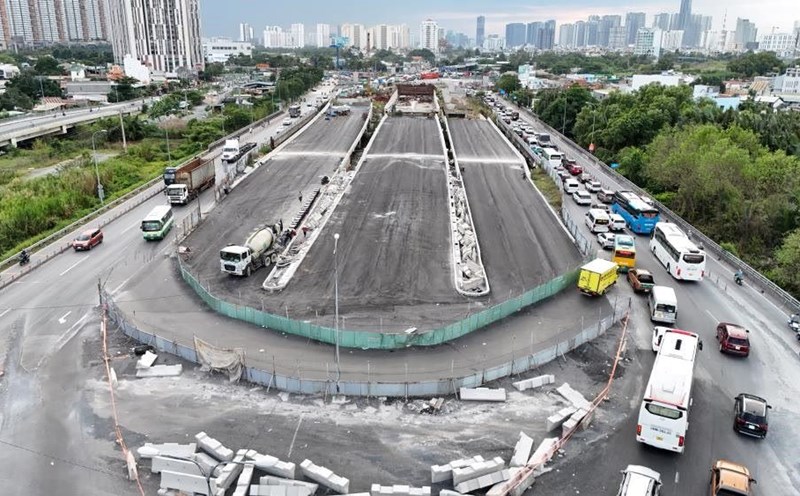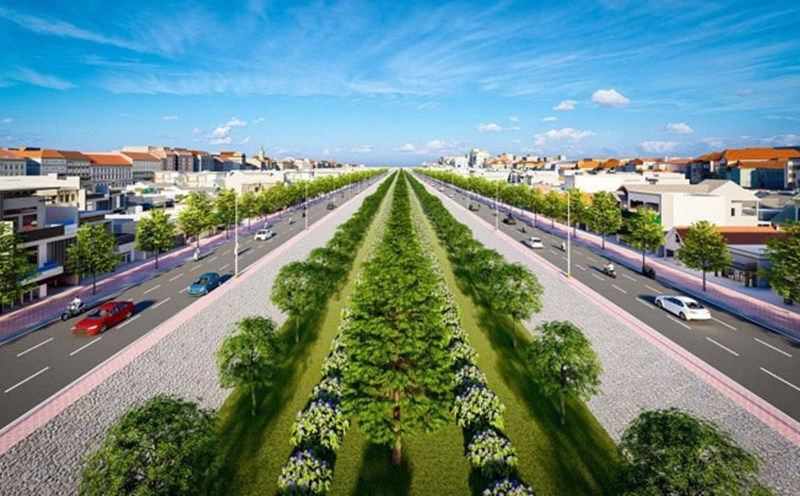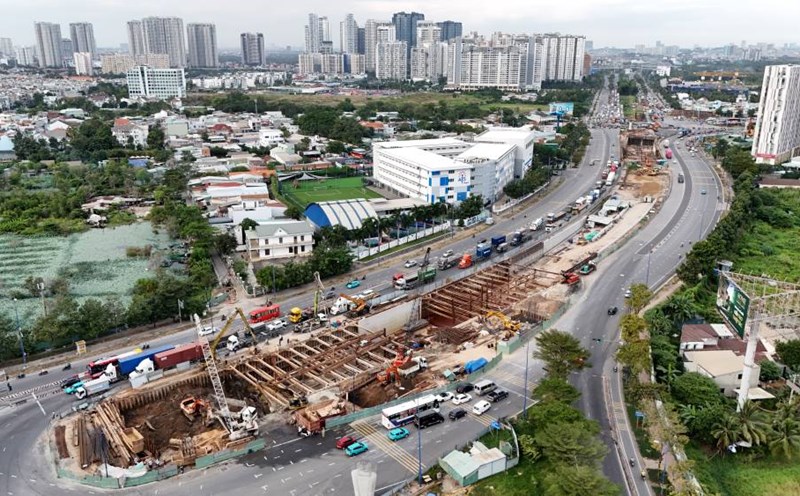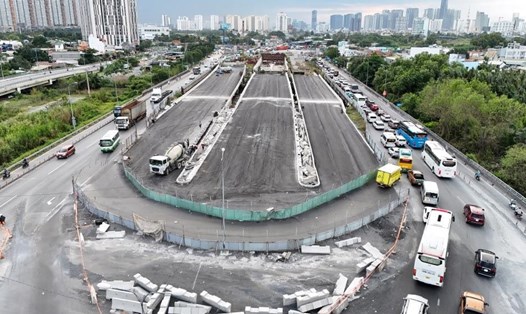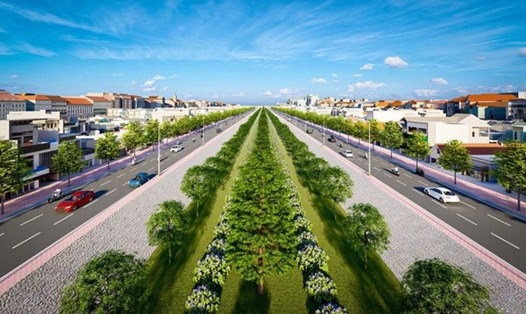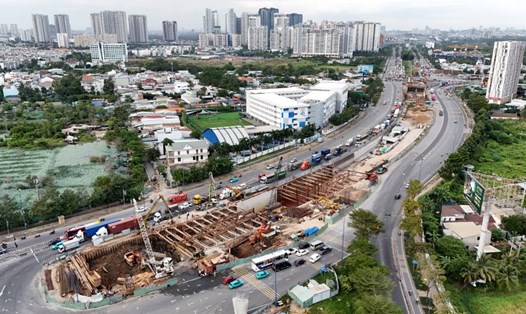The above proposal was made by Chairman of Ho Chi Minh City People's Committee Phan Van Mai at the conference to assess the socio-economic situation in January and tasks and solutions for February 2025, held on the afternoon of February 5.
Mr. Phan Van Mai said that previously the city only studied the option of building coastal roads within the city area.
However, Mr. Phan Van Mai proposed expanding the project in the direction of building a coastal route from Ho Chi Minh City to the Mekong Delta following the Dutch sea dike model.
According to Mr. Phan Van Mai, instead of using budget capital, the project will be implemented with social resources, and investors will exploit land funds along the route to recover capital.
“If successful, the project will open up new development space not only for Ho Chi Minh City but also for the Mekong Delta region,” said Mr. Phan Van Mai.
According to the planning of Ho Chi Minh City for the period 2021 - 2030, with a vision to 2050, recently approved by the Prime Minister, the city has identified a southern coastal traffic axis connecting from Tien Giang through Can Gio district (Ho Chi Minh City) to Dong Nai and Ba Ria - Vung Tau.
This route will start from National Highway 50 (Tien Giang), cross the Soai Rap River to enter Can Gio district, connect with Can Gio international transit port, Phuoc An port and extend to Ben Luc - Long Thanh expressway (Dong Nai).
The total length of the route is expected to be about 57.4 km, of which 38.2 km will pass through Ho Chi Minh City. The project has a scale of 4 - 8 lanes and is expected to be invested after 2030.
In particular, the section through Can Gio will combine many forms such as above-ground, underground and viaduct to protect the Can Gio Mangrove Biosphere Reserve.
This route is expected to effectively exploit important seaports such as Can Gio port, Cai Mep - Thi Vai port, and formed a coastal economic corridor connecting Ho Chi Minh City with Tien Giang, Dong Nai and Ba Ria - Vung Tau.
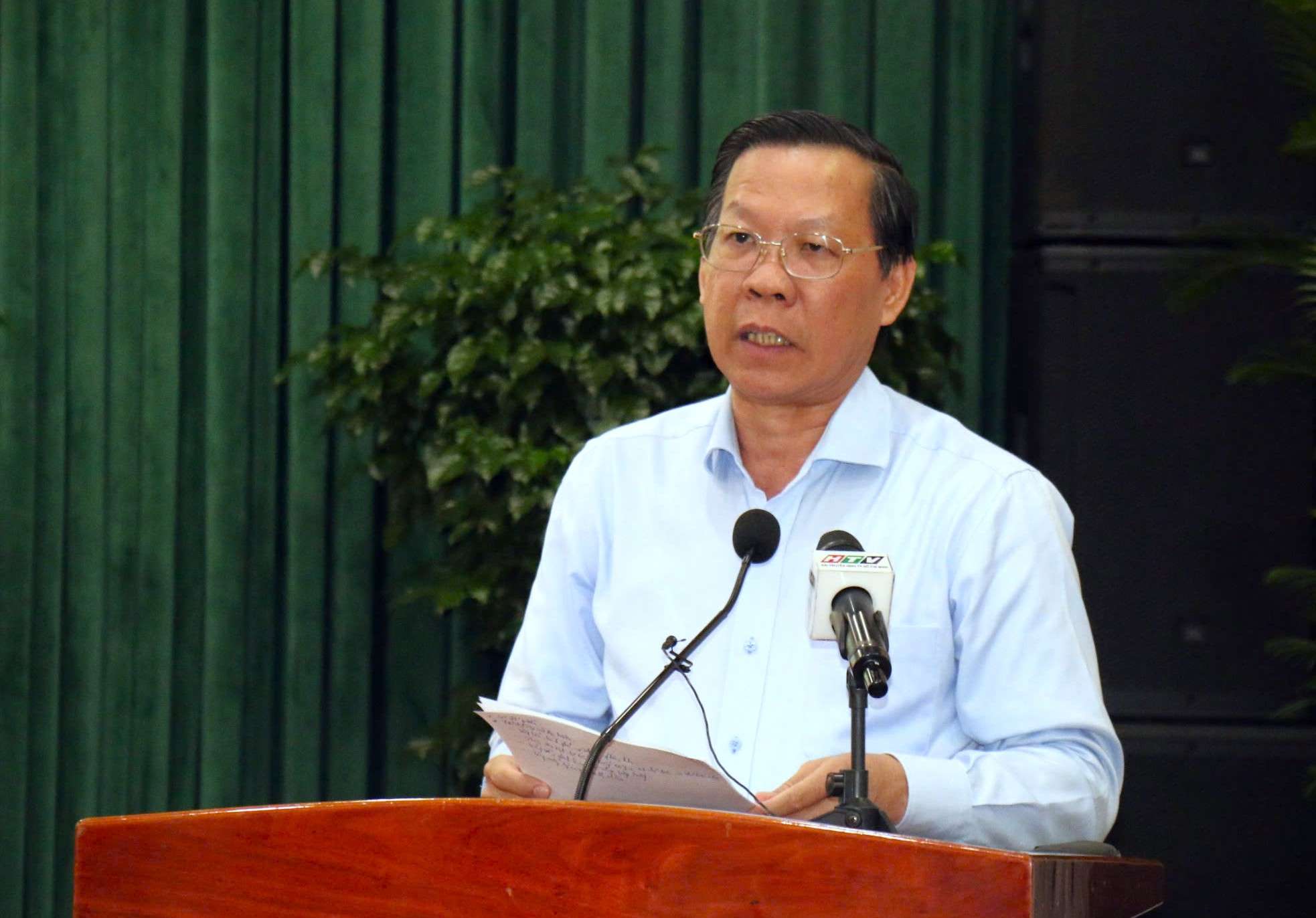
In addition to the coastal route, the Chairman of the Ho Chi Minh City People's Committee also mentioned the railway project connecting Thu Thiem with Long Thanh airport (Dong Nai).
According to Mr. Phan Van Mai, this project was previously prepared for investment by the Ministry of Transport. However, the Ministry is currently considering transferring it to Ho Chi Minh City as the investor to speed up progress.
To implement the project, Mr. Phan Van Mai emphasized the need to propose a superior mechanism to complete the railway within the next 3-5 years, contributing to the effective exploitation of Long Thanh airport.
Also at the conference, Mr. Phan Van Mai said that by the end of 2025, Ho Chi Minh City will basically complete the Ring Road 3 project. At the same time, the city will start construction of Ring Road 4 at the end of this year or early 2026.
In addition, in 2025, Ho Chi Minh City will start construction of the Ho Chi Minh City - Moc Bai expressway, build a 1.7 km section of the connecting road to the Ho Chi Minh City - Chon Thanh expressway, and expand the access roads to the two expressways Ho Chi Minh City - Long Thanh - Dau Giay and Ho Chi Minh City - Trung Luong.
In addition, Ho Chi Minh City will also implement 5 gateway upgrade projects under the BOT form according to Resolution 98, including: National Highway 13; National Highway 22; National Highway 1; North-South axis road; Binh Tien bridge and road.

